





Delineation
Centre and edge delineation treatments help drivers judge their position on the road, and provide advice about conditions ahead. Delineation treatments are particularly helpful where visibility can become poor (for example, due to rain, fog or darkness) and on sharp bends.
There are many delineation treatments available, and these should be used in a consistent manner along a route or road network. Example delineation treatments include:
Line marking
Painted line marking is relatively cheap. Centrelines can be used to discourage overtaking or accidental ‘drifting’ from the lane. Edge lines help drivers judge the alignment of the road ahead and can reduce run-off-road crashes. Line marking is also effective at reducing shoulder damage, and therefore in reducing maintenance costs. Rumble strips or profiled line marking applied as an edgeline or centreline can be effective in reducing run-off-the-road and head-on crashes, particularly crashes related to driver fatigue.
Retroreflective Pavement Markers (RRPMs)
Retro-reflective pavement markers or road studs (‘cats eyes’) are usually used in conjunction with painted line marking to warn drivers of changes in alignment in the road ahead. RRPM’s are particularly helpful in darkness or during wet weather when line marking becomes difficult to see.
Guide posts
Guide posts assist the road user by indicating the alignment of the road ahead, especially at horizontal and vertical curves. Guide posts are usually about one metre high and set about one metre from the edge of the road.
They can be equipped with reflectors, or painted with reflective paint, and so are especially useful at night. They should not constitute a roadside hazard, and so should be constructed of lightweight, frangible, durable material.
Guide posts may be necessary in some locations to show a road route in heavy snow.
Chevron alignment markers (CAMs)
CAMs or ‘chevrons’ can be installed along the outside of a bend to provide drivers with a better view of the bend as they approach it, and to assist them in positioning the vehicle during the bend.
Warning signs and advisory speed signs
Warning signs inform drivers of the nature of a hazard they are approaching. Advisory signs, including advisory speed signs, tell drivers how to navigate the hazard safely. For example, hazardous bend signs placed on the approach to the bend can inform the driver of how the road alignment changes. Hazardous bend signs can be mounted above an advisory speed limit sign which states a safe speed for the bend.
- Road markings are among the most cost-effective treatments to make roads safer.
- Delineation improvements have been shown to reduce head-on and run-off road crashes.
- Helps drivers to maintain a safe and consistent lateral vehicle position within the lane.
- Reduction in night time and low-visibility crashes.
- Reduction in pavement deterioration due to vehicles driving onto the shoulder.
- In many countries linemarking is ignored (and physical barriers to crossing the centre line are needed).
- Poorly designed or located delineators can add to crash risk.
- Too many signs can confuse drivers.
- Road studs require a good quality road surface.
- Delineation needs to be consistent throughout an entire country.
- The retro-reflectivity of lines and signs is an important consideration for road use at night and in the wet.
- The effectiveness of line markings is dependent on the line width and its retroreflectivity.
The Star Rating Demonstrator is a freely available tool with the iRAP online software, ViDA. With the Star Rating Demonstrator, it is possible to explore the impact that this Safer Roads Treatment has on risk.
Treatment Summary
Costs | Low |
Treatment life | 1 year - 5 years |
Potential casualty reduction | 10-25% |
Case Studies
| Examples of related Case Studies |
|---|
| Rural road and motorway profiles |
| Mumbai – Pune Expressway Road Accident Study |
| Road Safety – Catalogue Of Case Studies |
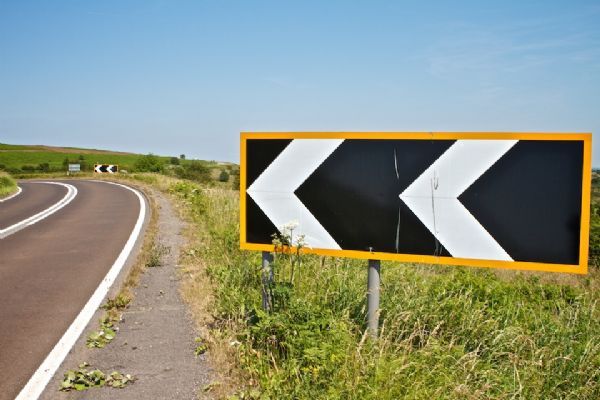 Chevron alignment markers provided to delineate curvature. Image credit: Unknown
Chevron alignment markers provided to delineate curvature. Image credit: Unknown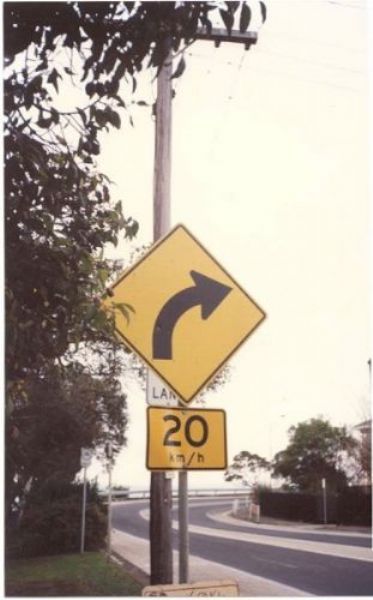 Advisory speed sign plus curve warning. Image credit: ARRB
Advisory speed sign plus curve warning. Image credit: ARRB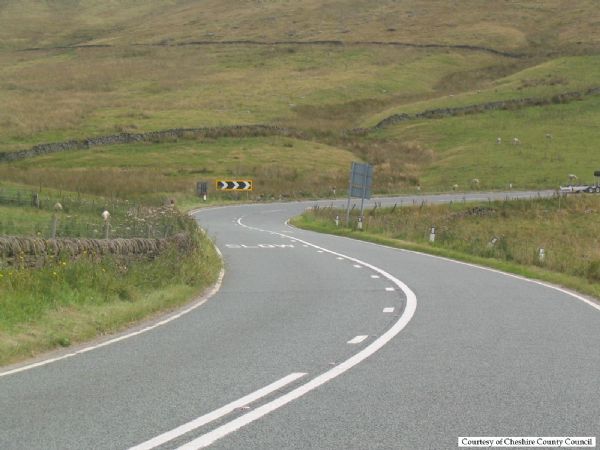 An example of good delineation with road markings and chevron sign. Image credit: Unknown
An example of good delineation with road markings and chevron sign. Image credit: Unknown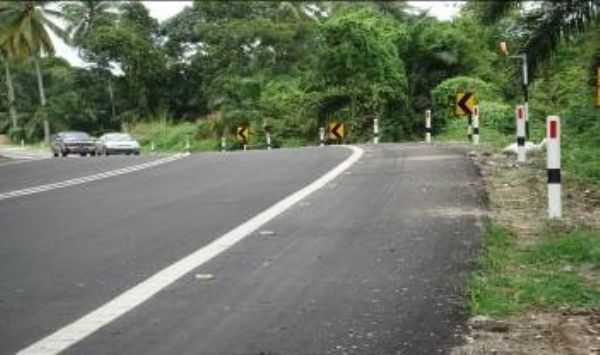 Chevron alignment markers (CAMs) and hazard markers improve delineation on the bend. Image credit JKR Malaysia
Chevron alignment markers (CAMs) and hazard markers improve delineation on the bend. Image credit JKR Malaysia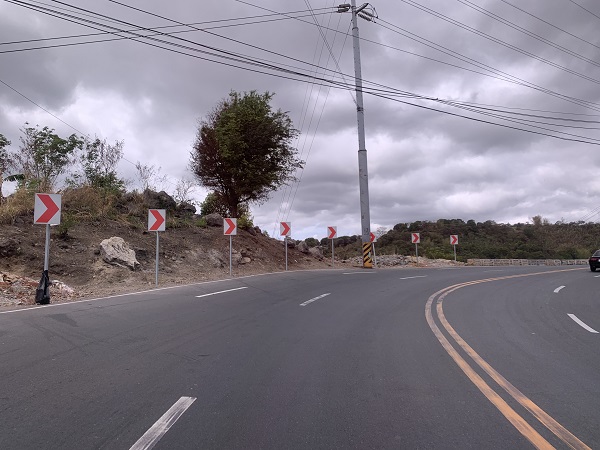 Curve on highway delineated with chevron signs - Philippines. Image credit: Alina Burlacu
Curve on highway delineated with chevron signs - Philippines. Image credit: Alina Burlacu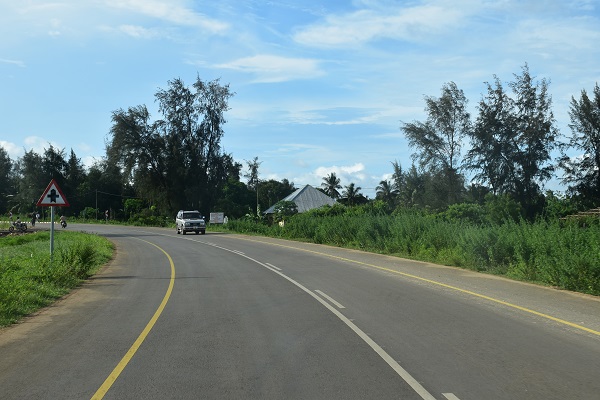 Curve on highway with poor quality curve delineation (Chevron signs /delineator posts are absent) - Tanzania. Image credit: Alina Burlacu
Curve on highway with poor quality curve delineation (Chevron signs /delineator posts are absent) - Tanzania. Image credit: Alina Burlacu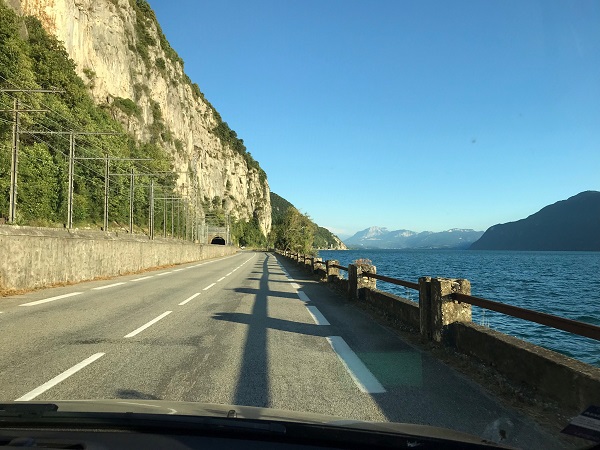 Delineation - France. Image credit: Unknown
Delineation - France. Image credit: Unknown Shoulder rumble strip in China. Image credit: Greg Smith
Shoulder rumble strip in China. Image credit: Greg Smith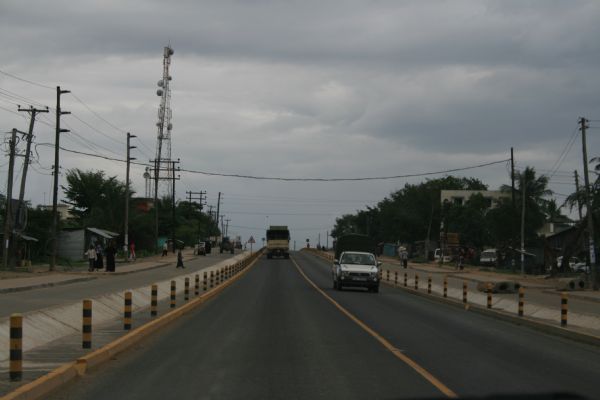 Flexible posts used to improve delineation in Kenya. Image credit: John Mumford
Flexible posts used to improve delineation in Kenya. Image credit: John Mumford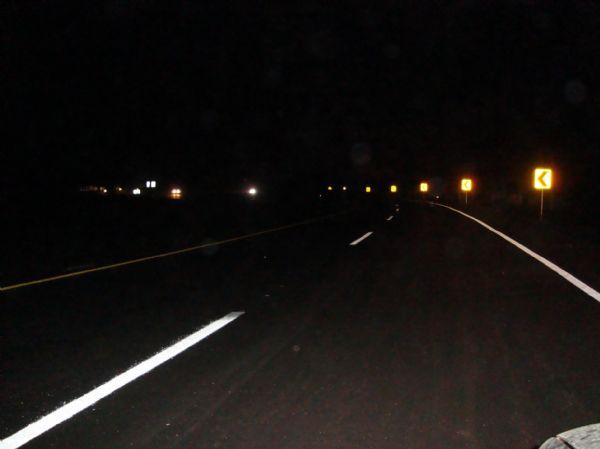 Good night-time visibility is provided by the road markings and chevron alignment markers (CAMs). Image credit: Greg Speier
Good night-time visibility is provided by the road markings and chevron alignment markers (CAMs). Image credit: Greg Speier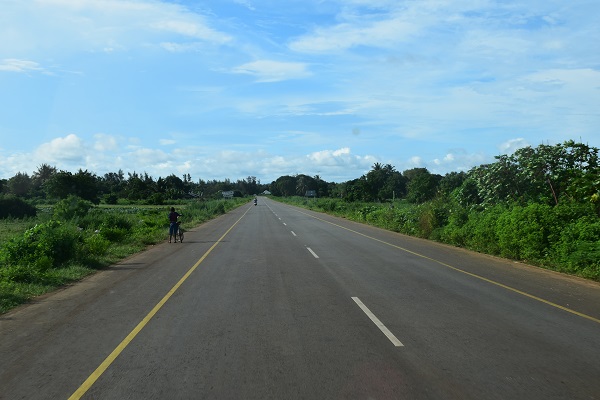 Highway with lanemarking and paved shoulders in Tanzania. Image credit: Alina Burlacu
Highway with lanemarking and paved shoulders in Tanzania. Image credit: Alina Burlacu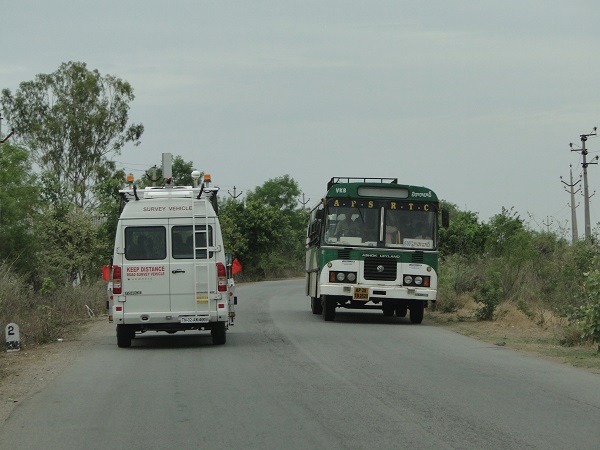 Single carriageway highway with poor lane marking - India. Image credit: iRAP
Single carriageway highway with poor lane marking - India. Image credit: iRAP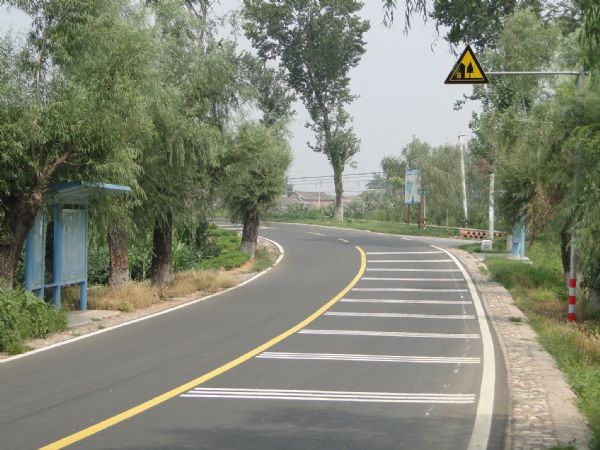 Lateral lines at the entrance to a curve, China. Image credit: iRAP
Lateral lines at the entrance to a curve, China. Image credit: iRAP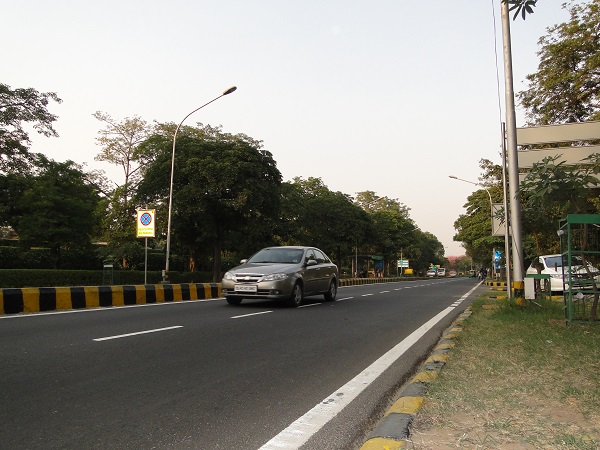 Urban road with adequate lanemarking in India. Image credit: iRAP
Urban road with adequate lanemarking in India. Image credit: iRAP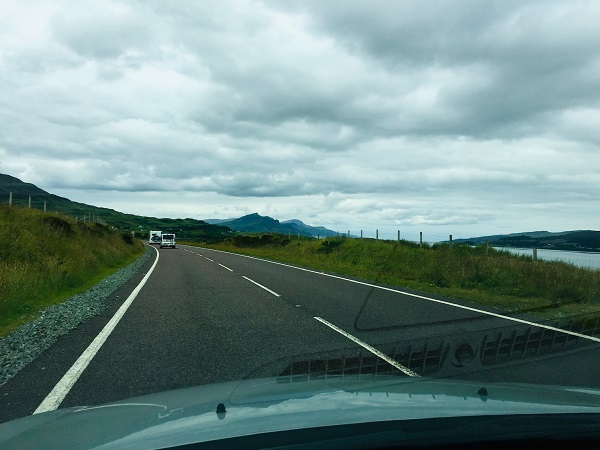 Linemarking in Scotland. Image credit: Unknown
Linemarking in Scotland. Image credit: Unknown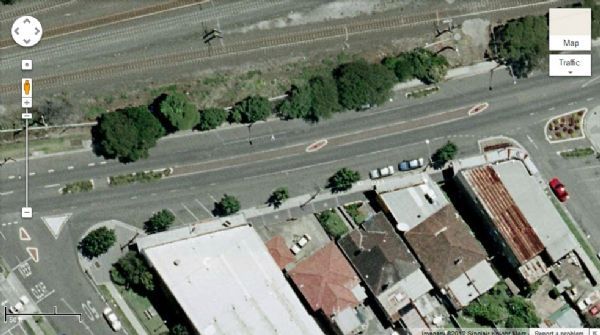 Pedestrian refuges, bicycle lanes, delineation and one-way road treatment. Image credit: Google Maps
Pedestrian refuges, bicycle lanes, delineation and one-way road treatment. Image credit: Google Maps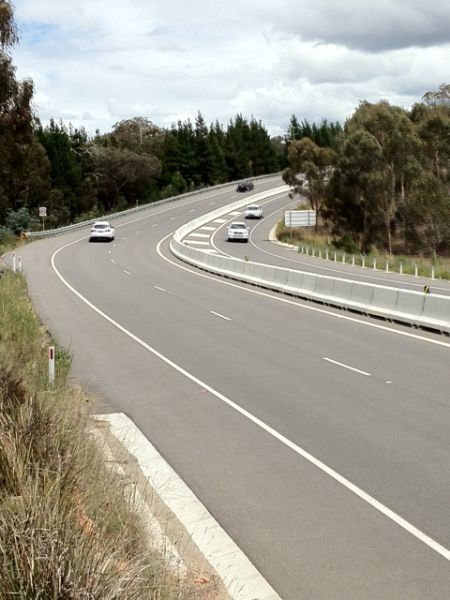 Roadside and median safety barriers on a curve in Australia. Image credit: Greg Smith
Roadside and median safety barriers on a curve in Australia. Image credit: Greg Smith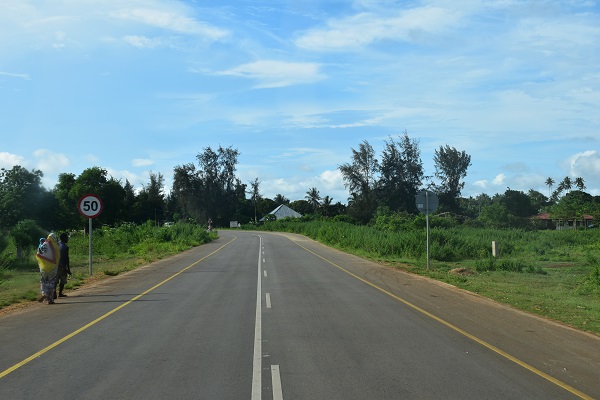 Speed limit sign in Tanzania. Image credit: Alina Burlacu
Speed limit sign in Tanzania. Image credit: Alina Burlacu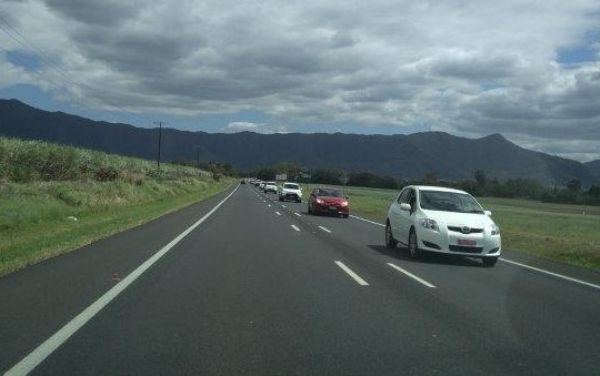 Wide center line treatment on undivided road in QLD, Australia. Image credit: Ken Thomason
Wide center line treatment on undivided road in QLD, Australia. Image credit: Ken Thomason










